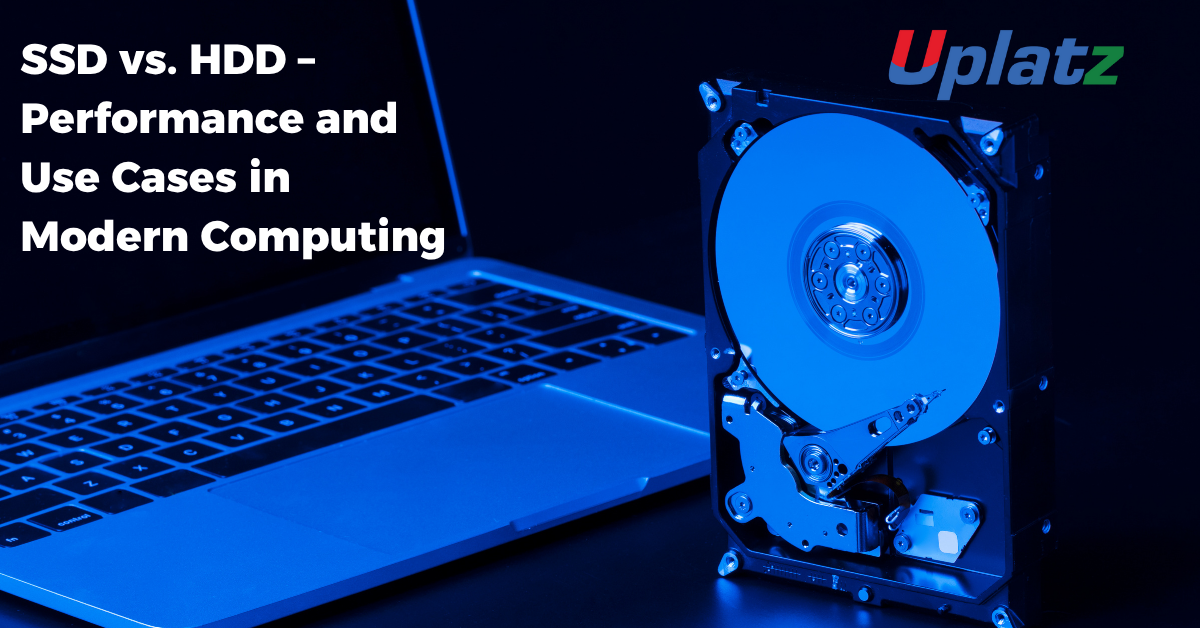SSD vs. HDD – Performance and Use Cases in Modern Computing
Modern computing environments demand storage solutions that balance speed, capacity, reliability, and cost. Two primary storage technologies are solid-state drives (SSDs) and hard disk drives (HDDs). This report examines their performance characteristics, cost considerations, and ideal use cases.

- Performance Characteristics
1.1 Random IOPS and Latency
SSDs deliver random read/write IOPS in the tens to hundreds of thousands, with typical consumer NVMe SSDs achieving 100,000–500,000 IOPS at queue depth 1 and latency below 0.1 ms. In contrast, 7,200 RPM HDDs offer only 80–100 IOPS and latencies around 4–8 ms due to mechanical seek and rotational delays.
1.2 Sequential Throughput
Sequential throughput measures continuous data transfer rates. NVMe SSDs on PCIe 4.0 and 5.0 interfaces reach 3,000–7,000 MB/s reads and similar writes, while SATA SSDs peak around 550 MB/s due to interface limits. HDDs typically sustain 150–250 MB/s on 7,200 RPM desktop models, peaking at 300 MB/s on high-end enterprise drives.
1.3 Seek Time
HDDs require head movement to locate data, with average seek times of 8–10 ms on 7,200 RPM drives and rotational delays of ~4.2 ms. SSDs lack moving parts, yielding near-instantaneous access times (<0.1 ms) regardless of data location.
- Cost and Energy Considerations
2.1 Cost per Gigabyte
Consumer-grade SSDs range from $0.03 to $0.10 per GB for SATA models and $0.06–$0.15 per GB for NVMe, whereas HDDs offer $0.02–$0.04 per GB for 3.5″ drives up to 16–20 TB capacity.
2.2 Power Consumption
SSDs exhibit lower idle power (0.2–1 W) and active power (2–12 W for NVMe Gen 4/5) compared to HDDs, which draw 4–8 W idle and 8–12 W during reads/writes on 7,200 RPM models.
- Reliability and Endurance
SSDs have no mechanical failure points but face finite program/erase (P/E) cycle limits; consumer SSD endurance typically exceeds 200 TBW for 1 TB drives. HDDs wear through spindle and head assembly usage but can offer higher total writes over long lifespans in archival scenarios.
- Use Case Scenarios
4.1 When to Choose SSD
- Operating System and Applications: Fast boot, low latency, quick application load times.
- Databases and Virtualization: High random IOPS ensures responsive small-block access.
- Content Creation and AI Workloads: High sequential throughput for large file transfers.
- Portable Devices: Shock resistance, lower power draw, slimmer form factors.
4.2 When to Choose HDD
- Mass Storage and Archival: Cost-effective bulk data retention, backups, and cold storage.
- Media Libraries and Surveillance: Large sequential writes with minimal random access needs.
- Budget-Constrained Deployments: High capacity at the lowest per-GB cost.
- Hybrid and Tiered Approaches
Combining SSDs for hot data and HDDs for cold data in tiered architectures optimizes both performance and cost. Automated data placement ensures frequently accessed data resides on SSD, while infrequently used files archive on HDD.
Conclusion: SSDs outperform HDDs in latency, IOPS, and sequential throughput, making them ideal for performance-sensitive applications, whereas HDDs remain the cost-effective choice for high-capacity storage and archival. Organizations should assess workload characteristics, budget constraints, and capacity requirements to determine the optimal mix.
